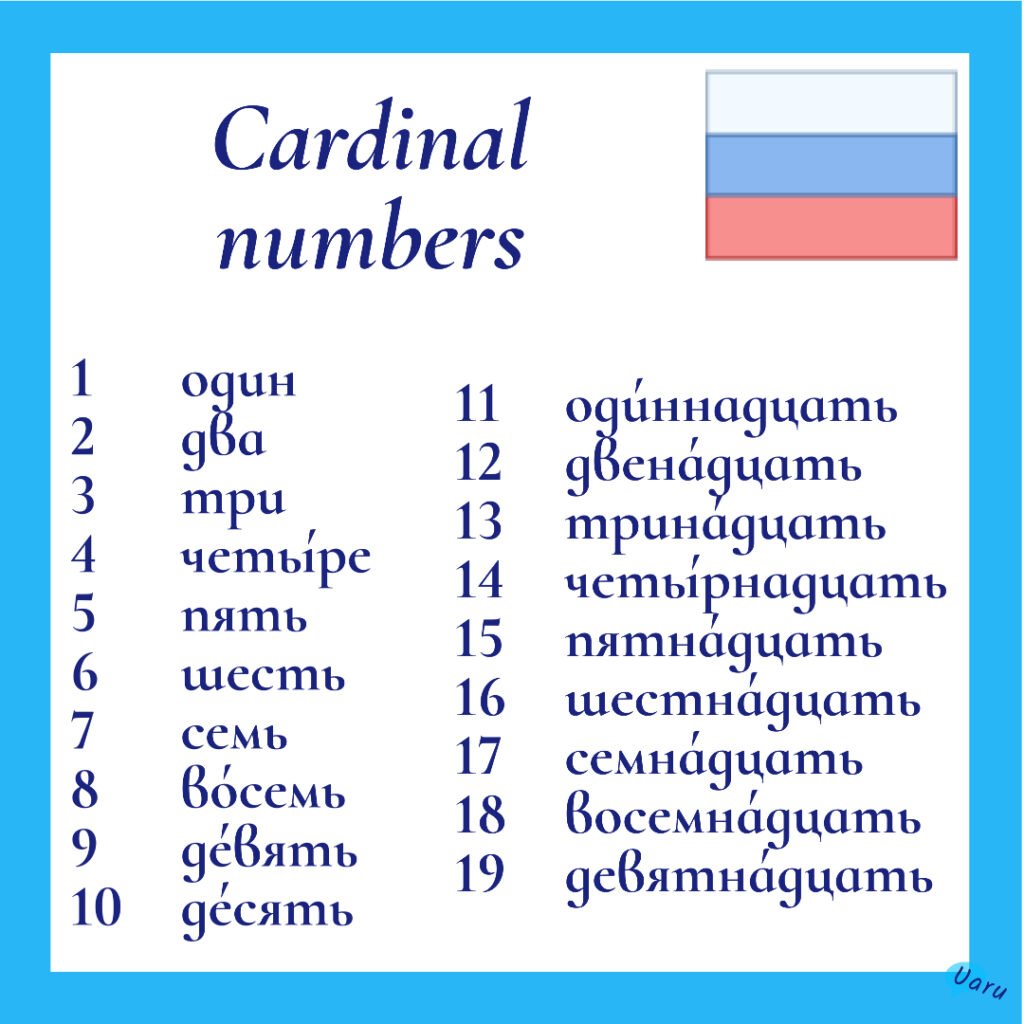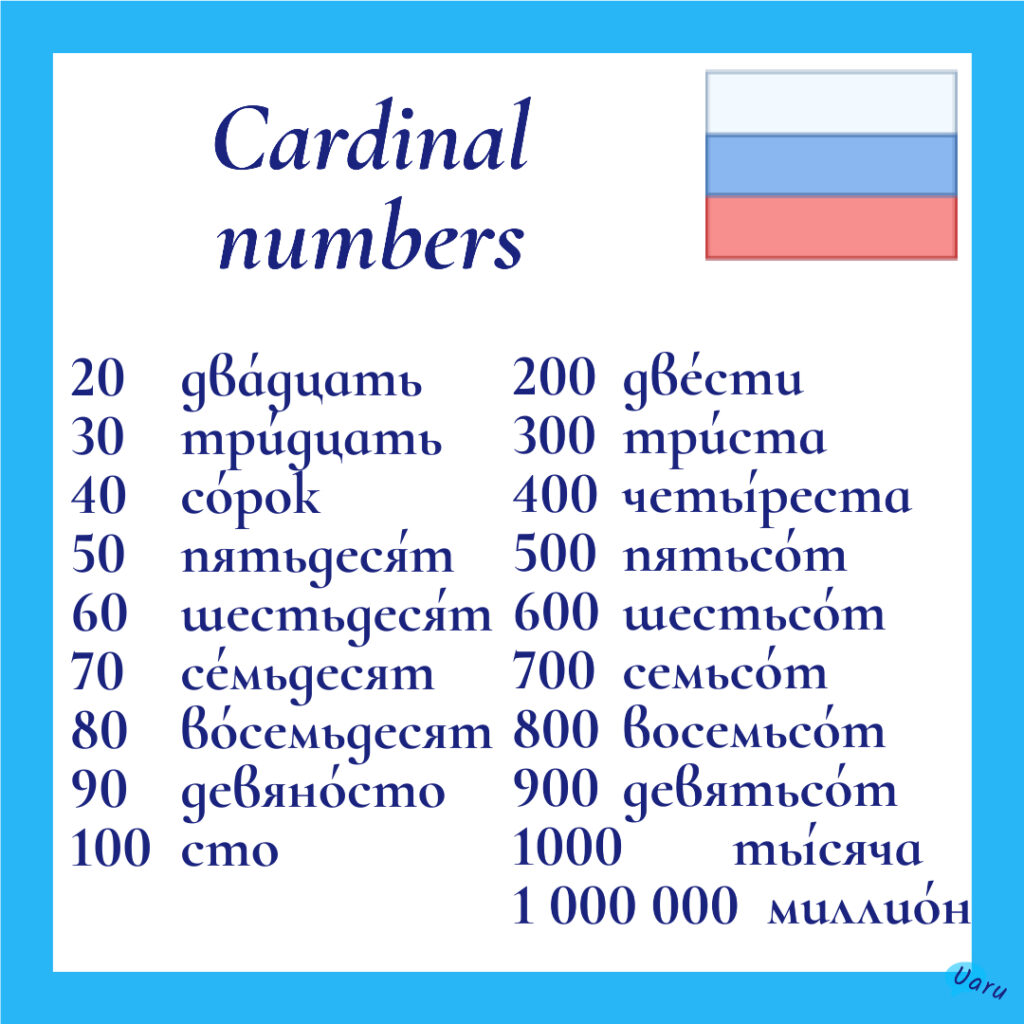Russian cardinal numbers tell the quantity of something. They are easy to learn and tend to follow a simple structure.

Numbers 1 – 10

| 1 | один |
| 2 | два |
| 3 | три |
| 4 | четы́ре |
| 5 | пять |
| 6 | шесть |
| 7 | семь |
| 8 | во́семь |
| 9 | де́вять |
| 10 | де́сять |
Numbers 11-19: To form these numbers, you will need add “надцать” to one of the numbers from 1 to 9. (“надцать” means “on ten”)
Один + надцать = одиннадцать – 11
Два + надцать = двенадцать – 12 (! Note: ‘a’ is changed to ‘e’)
Пять + надцать = пятнадцать – 15 (! Note: you will need to “throw away” soft sign on the end of numbers 5 – 9)
| 11 | оди́ннадцать |
| 12 | двена́дцать |
| 13 | трина́дцать |
| 14 | четы́рнадцать |
| 15 | пятна́дцать |
| 16 | шестна́дцать |
| 17 | семна́дцать |
| 18 | восемна́дцать |
| 19 | девятна́дцать |
Numbers 20 and 30 is formed by adding “дцать” (old name of “ten”) to два and три:
два + дцать = двадцать – 20
три + дцать = тридцать – 30
| 20 | два́дцать |
| 30 | три́дцать |
The number 40 is quite different from the other numbers and has a name that does not follow the same rules as the other numbers.
| 40 | со́рок |
Numbers 50, 60, 70, and 80 created by adding 5, 6, 7, or 8, and the particle “десят” (“ten”).
Пять + десят = пятьдесят – 50
Восемь + десят = восемьдесят – 80
| 50 | пятьдеся́т |
| 60 | шестьдеся́т |
| 70 | се́мьдесят |
| 80 | во́семьдесят |
Number 90 has unique way it is formed: “девяносто” has part “сто” – 100
| 90 | девяно́сто |
| 100 | сто |
Hundreds are built by setting the multiplier digit before the word for hundred which takes different forms:
| 100 | сто |
| 200 | две́сти |
| 300 | три́ста |
| 400 | четы́реста |
| 500 | пятьсо́т |
| 600 | шестьсо́т |
| 700 | семьсо́т |
| 800 | восемьсо́т |
| 900 | девятьсо́т |
| 1000 | ты́сяча |
| 1 million | миллио́н |
| 1 billion | миллиа́рд |
To form any number from 20 – 90 onwards, add a number between 1 and 9 to 20 – 90
21 = 20_1 = двадцать один
34 = 30_4 = тридцать четыре
46 = 4_6 = сорок шесть
The same we do with hundreds:
179 = 100_70_9 = сто семьдесят девять
312 = 300_12 = триста двенадцать
